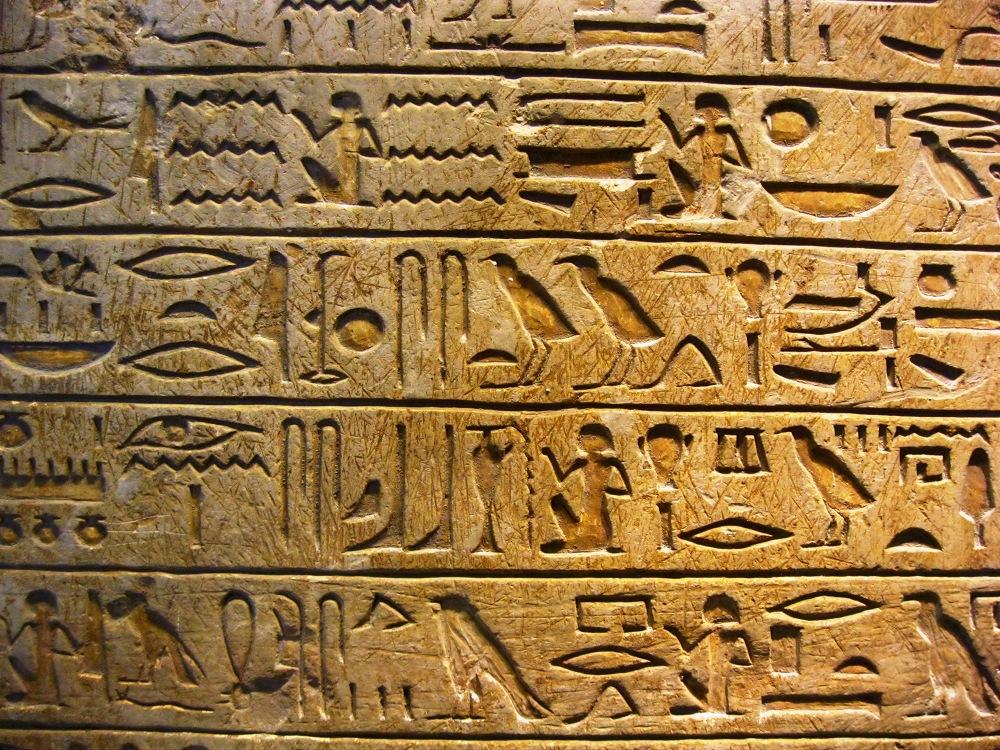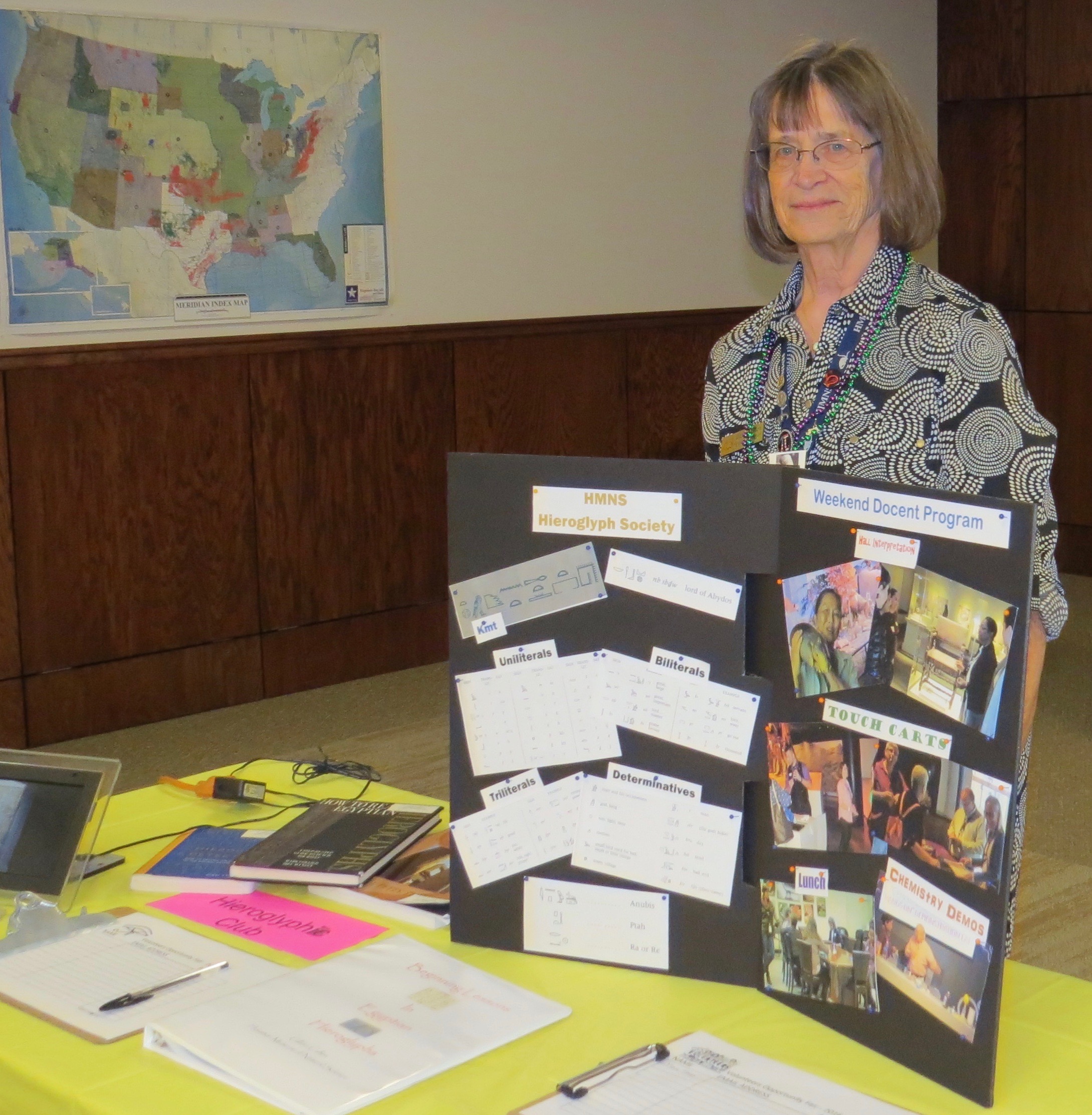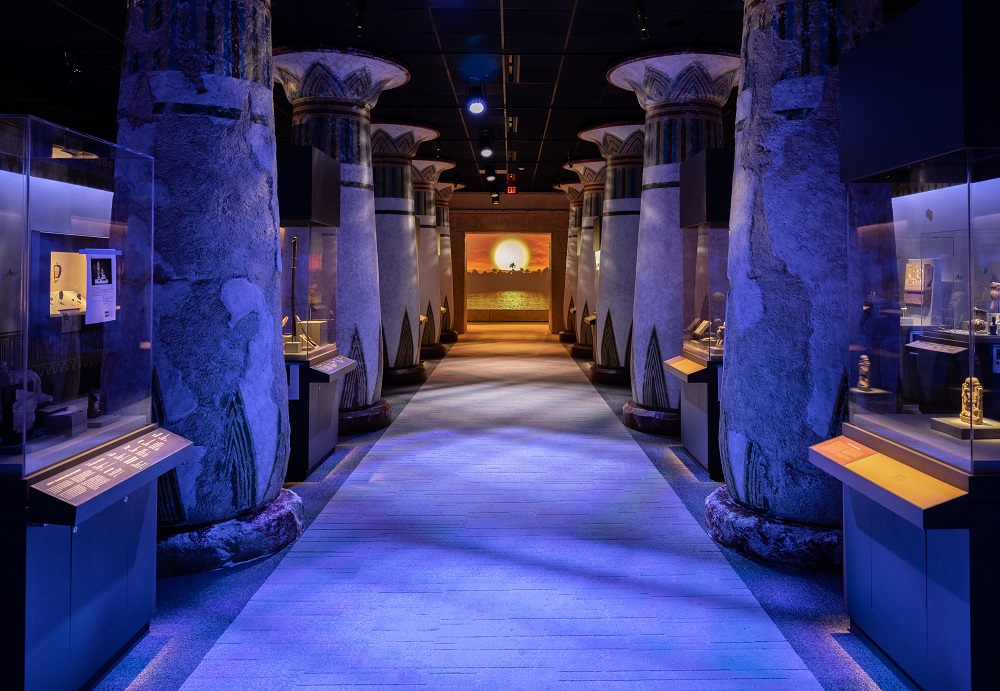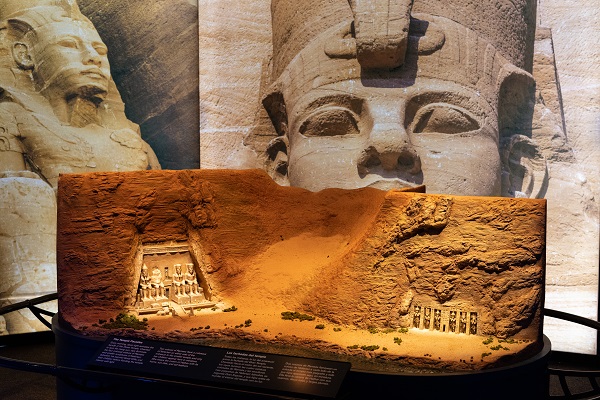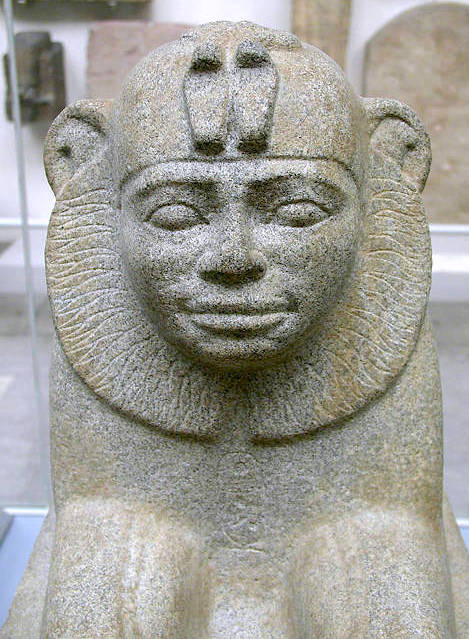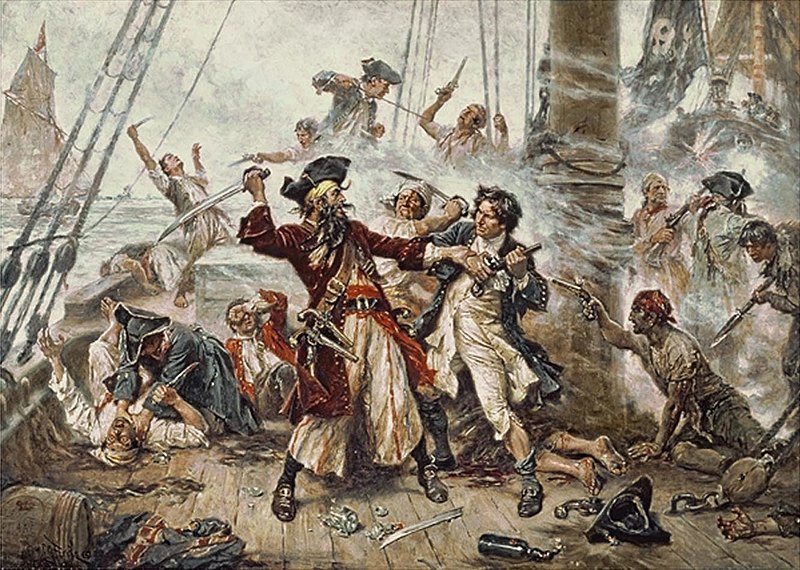by Gillian Callan
Egyptian hieroglyphs. Once thought to be magic writings that contained the secrets to life, they were deciphered by Thomas Young and Jean Francois Champollion in the early 1800’s. What mysteries did they contain? For the majority of the visitors to the Hall of Ancient Egypt, the glyphs are still a mystery – a bunch of squiggles with pictures of animals interspersed. But for the HMNS Hieroglyph Study Group, they are a chance to learn and practice the language of ancient Egypt.
Egypt fascinated me from early childhood, but I thought I would never get to study or visit Egypt (I did visit nine years ago, and it was fantastic!). So I thought about what I could learn about Egypt without a degree or a plane ticket. I decided that I would learn hieroglyphs. Mark Collier and Bill Manley wrote a book called How to read Egyptian Hieroglyphs. From them, I learned the basics. Then about four years ago, I met a fellow HMNS volunteer who was also interested in hieroglyphs. Another year passed and another volunteer joined HMNS and mentioned that he was also interested in hieroglyphs and asked if we could start a study group. And that’s how we got started.
In order to make our study time worthwhile to the museum, we tasked ourselves with translating as many of the inscriptions in the Egypt hall as we could. To date, we have completed seven of the longer inscriptions and started on several more. The inscriptions fall into two categories: formulaic writings and hymns. The formulaic writings are offerings to the gods. While they follow a set format, we usually find something different in each of them. The hymns are much more difficult. Poetry in any language is harder to interpret than prose, and Egyptian hymns are no different. It also helps if you understand something of the culture of ancient Egypt.

Hieroglyphs on the coffin of Ankh-Hap. His name appears in the lower left-hand corner of this photo.
While our translations have not been published to the volunteer website, we did create a flip book with useful translations from objects in the hall. In the flip book, we included a translation of Ankh-Hap’s name on his coffin. Ankh-Hap is the mummy owned by HMNS. We located Ptolemy’s cartouche on the replica Rosetta Stone. (We even located it in Demotic and Greek!) By the way, all the cartouches on the Rosetta Stone belong to Ptolemy V, Epiphanes – no Cleopatra, no wives’ names, just Ptolemy. The idea behind the flip book is that someone working or giving a tour in the hall can take the flip book out of the touchcart (there is one book in each cart) and take it to an object in the hall and show visitors appropriate glyphs and what they mean. One of my favorites is to show the bird in Bakenrenes’ name, followed by the rest of her name. It is repeated several times on the cartonnage coffin and visitors get a kick out of being able to recognize the glyphs.
Egyptian hieroglyphs are not a phonetic script, nor are they picture writing. They are a complex combination of phonetics, picture writing and “syllables”. They can be written left to right, right to left and in columns that also have either a left/right or right/left orientation. The favored direction was right to left. But on coffins, the glyphs were written from head to foot. Writers of hieroglyphs also, on occasion, used shortcuts. They fitted the message into the space available and left out what they could, making it difficult at times to read the message correctly. Kind of like today’s usage of text shortcuts like LOL (laugh out loud) or BTW (by the way).
The HMNS Hieroglyph Study Group meets every Sunday in the Volunteer Library around noon. Our current members are Gillian Callen, John Cochran, David Santana and Scott Brown, all HMNS volunteers. I also teach basic hieroglyphs to willing volunteers. Last summer I taught a three-day session on glyphs including grammar and sentence structure. While I am self-taught and by no means an expert, I can introduce you to the basics and give you a feel for the ancient Egyptian language. These classes are only open to HMNS volunteers and staff. So, if you are interested, find out about becoming a volunteer and then you can sign up for a class. Then when you walk through the Hall of Ancient Egypt, those squiggles will jump out at you and make at least a little bit of sense. Happy translating!
Editor’s Note: Gillian is an HMNS volunteer docent.


